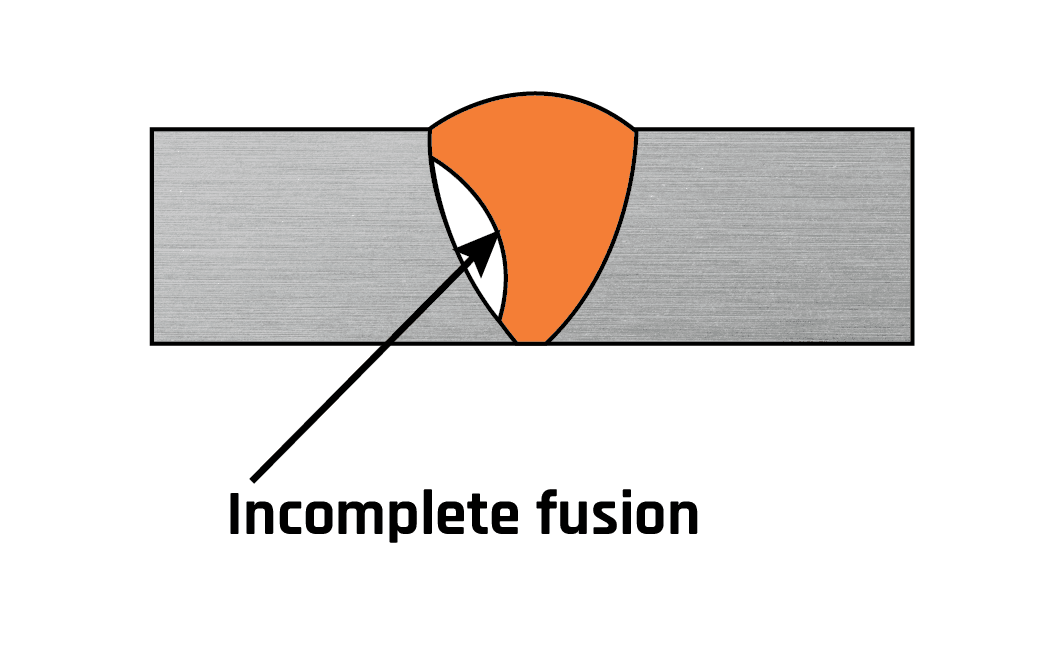Efficient Ways to Prevent Weld Undercut in Your Welding Tasks
Efficient Ways to Prevent Weld Undercut in Your Welding Tasks
Blog Article
Understanding the Causes and Solutions for Undercut Welding in Metal Fabrication Processes
In the world of steel construction processes, the event of undercut welding presents a substantial obstacle that requires a thorough understanding of its reasons and viable solutions. The elaborate interaction of different aspects throughout welding operations can bring about this undesirable phenomenon, affecting the structural stability and general top quality of the welded joints - Preventing weld undercut. By dissecting the root causes of undercut welding and exploring effective remedial steps, producers can boost the requirement of their workmanship and guarantee the production of flawless steel elements
Typical Sources Of Undercut Welding
Frequently forgotten in steel construction, undercut welding happens because of numerous aspects that demand careful focus and expertise to be effectively minimized. One common cause of undercut welding is extreme heat input. When the heat input is too expensive, it can bring about the melting and succeeding disintegration of the base product along the sides of the weld joint, developing a groove or undercut. Additionally, incorrect welding methods, such as utilizing the incorrect welding angle or take a trip speed, can likewise add to undercut formation. Inadequate shielding gas insurance coverage is an additional essential aspect that can lead to damaging. Not enough gas protection fails to secure the weld swimming pool effectively, leading to oxidation and undercut problems. Additionally, the option of welding criteria, such as voltage, current, and wire feed speed, plays a substantial duty in the event of undercut welding. Comprehending these common causes is essential for executing safety nets and ensuring premium welds in steel manufacture processes.
Effect of Incorrect Welding Parameters
Imprecise welding specifications can dramatically endanger the stability and quality of welded joints in metal fabrication processes. The impact of inaccurate welding parameters materializes in different ways, leading to structural weaknesses and defects in the bonded parts. Careful focus to welding criteria is paramount to guarantee the production of top notch welds with the wanted mechanical buildings and structural stability.
Effect of Improper Lantern Angle
Improper lantern angle in welding procedures can substantially affect the quality and stability of the last weld joints in metal construction procedures. Undercutting is a common welding defect where a groove creates along the weld toe, damaging the joint and endangering its architectural integrity.
A lantern angle that is as well steep can bring about not enough penetration, incomplete fusion, and raised spatter. On the other hand, a torch angle that is as well superficial can lead to excessive infiltration, burn-through, and distortion of the base product. Preventing weld undercut. Correct lantern angle is important for ensuring additional info regular weld quality, stamina, and look
To prevent damaging and various other flaws triggered by incorrect lantern angles, welders must be educated to maintain the appropriate torch angle throughout the welding procedure. Routine monitoring and change of lantern angles throughout welding can help achieve sound welds with very little problems.
Function of Inadequate Welding Methods

An additional facet of Our site insufficient welding techniques is improper weld prep work. Inadequate cleaning of the base metals, inaccurate joint layout, or not enough edge preparation can all contribute to undercut welding. Moreover, insufficient securing gas protection or making use of the wrong type of gas can result in incomplete combination and the development of undercut issues.
To resolve the duty of inadequate welding strategies in steel fabrication procedures, it is vital to offer thorough training for welders. Appropriate education and learning on welding criteria, joint preparation, and protecting gas option can assist protect against undercut welding and ensure high-grade welds in steel fabrication tasks.
Reliable Solutions for Undercut Welding
Attending to undercut welding in metal fabrication calls for applying effective services to enhance weld top quality and structural stability. Among the key services to combat undercut is to adjust welding parameters such as voltage, present, and take a trip rate to make certain appropriate warm input and blend. By fine-tuning these settings, welders can protect against extreme melting of the base steel and filler material, reducing the probability of undercut development.
Additionally, appropriate joint preparation is crucial in avoiding undercut. Making sure clean base steel surface areas more information without contaminants and making use of the appropriate bevel angle can aid promote far better weld infiltration and lower the threat of undercut - Preventing weld undercut. Utilizing ideal welding strategies, such as weaving or oscillating the torch, can also aid in dispersing heat evenly and loading the weld joint sufficiently, reducing the possibility of undercut flaws
Moreover, selecting the appropriate welding consumables, consisting of electrodes and filler metals, is important in reducing undercut. Using materials with appropriate chemical compositions and mechanical buildings can add to achieving sound welds with minimal undercut. Routine inspection and top quality control actions ought to also be implemented to discover and deal with undercut problems without delay, ensuring the general integrity of produced steel elements.

Final Thought
To conclude, recognizing the causes and solutions for undercut welding in metal construction processes is critical for accomplishing top notch welds. By attending to usual causes such as wrong welding criteria, improper torch angle, and poor welding methods, welders can protect against undercutting and make sure solid, long lasting welds. It is crucial to take notice of these aspects and execute effective options to improve the general welding procedure and end product top quality.

Report this page